Cornwall: Desalination 'could provide third of county's water'
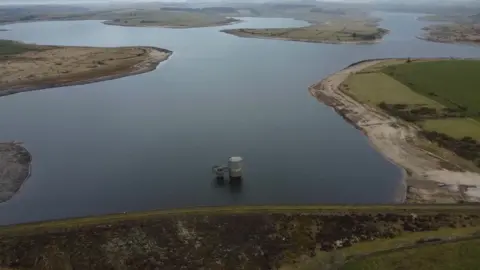 BBC
BBCMore than a third of Cornwall's drinking water could come from desalination if plans for two plants go ahead, South West Water (SWW) has said.
The company said the region's water resources remained under "immense and increasing pressure".
Cornwall's main reservoir at Colliford, on Bodmin Moor, is less than half full, data shows.
The Environment Agency said Devon, Cornwall and the Isles of Scilly were still in "drought".
David Harris, SWW's drought and resilience director, said nobody could predict how much rain would fall but that the company had a plan in place to cover all scenarios.
Desalination plants remove salt from seawater to produce clean drinking water.
There are currently plants in the Isles of Scilly and the Channel Islands, along with a plant in London, but SWW is planning two for Cornwall at locations that have yet to be disclosed.
"What last year has shown us and what climate changes shows us is we need to be developing climate-independent sources of water here in Cornwall," said Mr Harris.
"We've got an 800-odd mile coastline; it's logical for us to look to desalination."
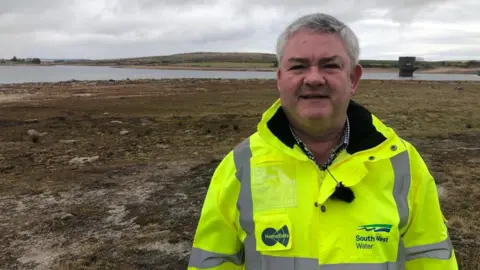
Mr Harris said the two plants planned for Cornwall's south coast would provide about 60 megalitres - or 60 million litres - a day.
Cornwall uses about 170 megalitres a day, meaning more than a third of its water could come from desalination if the plants go ahead.
Mr Harris said it was hoped the plants could be operational by the summer but admitted that was "very challenging", both from an engineering perspective and in terms of permits, which SWW was working on with the Environment Agency and Cornwall Council.
Six other potential sites for desalination had been identified for use if needed in the future, Mr Harris said, adding the investment in desalination and other measures such as pumping was currently £80m.
Storage at Colliford - Cornwall's largest inland water - was at 48.9% as of 26 February, compared to 49.4% the week before.
Mr Harris said water levels were "not where we'd like to be" and that at this time of year, storage would typically be at 70-80%.
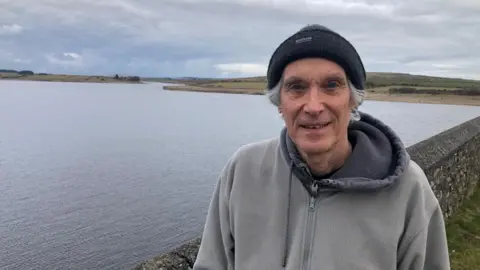
Environmental campaigner Jim Hunt from Davidstow, near Camelford, has been monitoring reservoir levels - including at Colliford - for the last few years and said the level was "astonishingly low".
"It rained hard over winter, with a very dry February and now Cornwall's biggest reservoir is half-full," he said.
"Where's the water gone?"

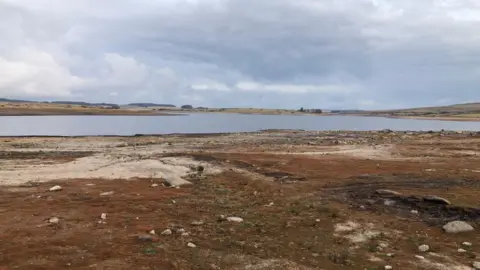
Analysis
By David Braine, BBC senior weather forecaster
Colliford is one of the three strategic reservoirs for Devon and Cornwall because it holds 28,000 megalitres of water, much more than other, smaller reservoirs.
This time last year, it was 80% full. Last summer's heatwave and dry spell saw it fall to its lowest ever level - just 15% - and, even now, it is just under half-full.
Overall reservoir levels in Devon and Cornwall are also down: they're currently at 71.4% full, compared to over 90% last year.
Parts of Cornwall and Devon are still officially in drought, and although we had well-above-average rainfall for November, December and January, February was very dry.
The rate at which the reservoir fills isn't just down to rainfall: river flows are a key factor, and SWW is also pumping water into Colliford from rivers and other sources, which it does during dry periods.
But demand is also important - that's how much water we all use, when we put the dishwasher on or have a shower.

SWW said it had been acting quickly to boost water resilience, including with a series of drought permits which allowed it to abstract additional water.
"We have implemented other intervention assets including Hawks Tor, a redundant china clay pit purchased in 2022, which has been converted into a new reservoir inside nine months and brought important new resource," the company said, adding it had brought in 22 people from Bristol Water to help with customer leaks.
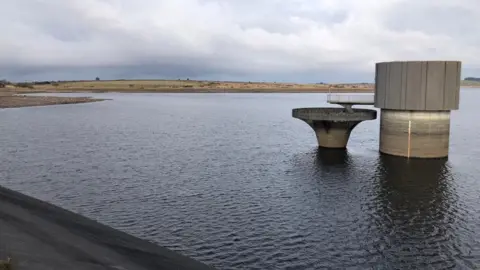
Alastair Chisholm, director of policy at the Chartered Institution of Water and Environmental Management, said there were not many desalination plants in the UK so building new ones was a "significant step".
"Having said that, it's a completely normal technology in other parts of the world. It can be really flexible; it can be really useful when we need extra supplies in drought conditions," he said.
"It's going to be really helpful and we're going to see increasing pressures on water resources both in the South West and across the rest of the country in the coming decades."
Mr Chisholm added he did not believe the public should worry about losing water supply but that it needed to play its part.
"We're not asking them to not use water, we're just asking them to use water responsibly," he said.

Follow BBC News South West on Twitter, Facebook and Instagram. Send your story ideas to [email protected].
